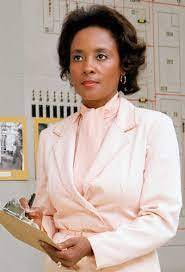

Annie Easley, born in 1933, was an African-American computer scientist, rocket scientist and mathematician who worked for for the Lewis Research Center of the National Aeronautics and Space Administration (NASA).
Annie Easley initially worked as a substitute teacher in Alabama and when she moved to Ohio with her husband, her plans of pursuing pharmaceutical studies fell through. After being inspired by an article Easley applied for work with NASA and worked with them for 34 years.
Easley's efforts in promoting social mobility for the African-American community started as early as 1954 where she helped members of the community study for the literacy test established through Jim Crow laws.
As one of the only four black people (out of 2,500) working for NASA, Easley worked on a multitude of projects, some of her well-known contributions include developing code for NASA's Centaur Rocket and powering early hybrid vehicle battery technology.
As NASA began to replace their "human computers" with technology, Easley went on to learn the programming languages Formula Translating System (Fortran) and Simple Object Access Protocol (SOAP)
Annie Easley later on returned to school to pursue a degree in mathematics in 1977 whilst working full time.
Easley continued her work in promoting diversity and inclusion through her efforts by working with local tutoring programmes to advocate for youth in STEM and as an Equal Employment Opportunity (EEO) counselor where she would address gender, race and age discrimination complaints made by NASA employees.
Annie Easley's work throughout her lifetime built the foundation for future space shuttle launches, satelite development and energy conversion systems research.